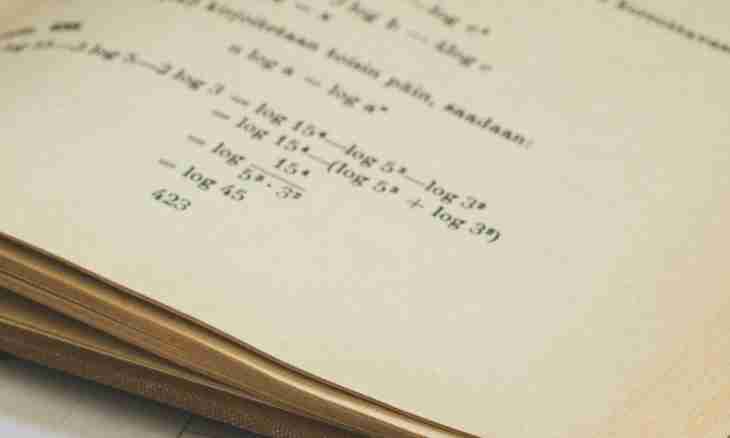Number b logarithm on the basis of a call such degree x that at construction of number a in degree x number b turns out: log a(b) = x ↔ a^x = b. The properties inherent in logarithms of numbers allow to reduce addition of logarithms to multiplication of numbers.
It is required to you
- Knowledge of properties of logarithms will be useful to you.
Instruction
1. Let there is a sum of two logarithms: number b logarithm on the basis of an is loga(b), and number d logarithm on the number basis with – logc(d). This sum registers as loga(b) + logc(d). You can be helped by the following solutions of this task. First, look whether the case is trivial when also the bases of logarithms (a = c), and numbers under the sign of logarithms (b = d) coincide. In this case put logarithms as usual numbers or unknown. For example, x + 5 * x = 6 * x. Also and for logarithms: 2 * log 2(8) + 3 * log 2(8) = 5 * log 2(8).
2. Further, check whether it will turn out to calculate a logarithm elementary. For example, as in the following example: log 2(8) + log 5(25). Here the first logarithm is calculated as log 2(8) = by log 2(2^3). I.e. in what degree it is necessary to build number 2 to receive number 8 = 2^3. The answer is obvious: 3. Similar to and with the following logarithm: log 5 (25) = log 5 (5^2) = 2. Thus, you receive the sum of two natural numbers: log 2(8) + log 5(25) = 3 + 2 = 5.
3. If the bases of logarithms are equal, then the property of logarithms known as "a work logarithm" comes into force. According to this property the sum of logarithms with the identical bases it is equal to a work logarithm: loga(b) + loga(c) = loga(bc). For example, let the sum of log 4(3) + log 4(5) = is given to log 4(3 * 5) = log 4(15).
4. If the bases of logarithms of the sum satisfy to the following expression of a = c^n, then it is possible to use property of a logarithm with the sedate basis: log a^k(b) = 1/k * log a(b). For the sum of log a(b) + log c(d) = log с^n (b) + log c(d) = 1/N* log c(b) + log c(d). Thus logarithms are given to the general basis. Now it is necessary to get rid of a multiplier 1/n before the first logarithm. For this purpose use property of a logarithm of degree: log a(b^p) = p * log a(b). For this example it turns out that 1/N* log c(b) = log c (b^(1/n)). Further multiplication on property of a logarithm of the work is made. 1/N* log c(b) + log c(d) = log c (b^(1/n)) + log c(d) = log c (b^(1/n) * d).
5. Use the following example for descriptive reasons. log 4(64) + log 2(8) = log 2^(1/2) (64) + log 2(8) = 1/2 log 2(64) + log 2 (8) = log 2 (64^(1/2)) + log 2(8) = log 2 (64^(1/2) * 8) = log 2 (64) = 6. As this example is easily calculated, check the received result: log 4(64) + log 2(8) = 3 + 3 = 6.

